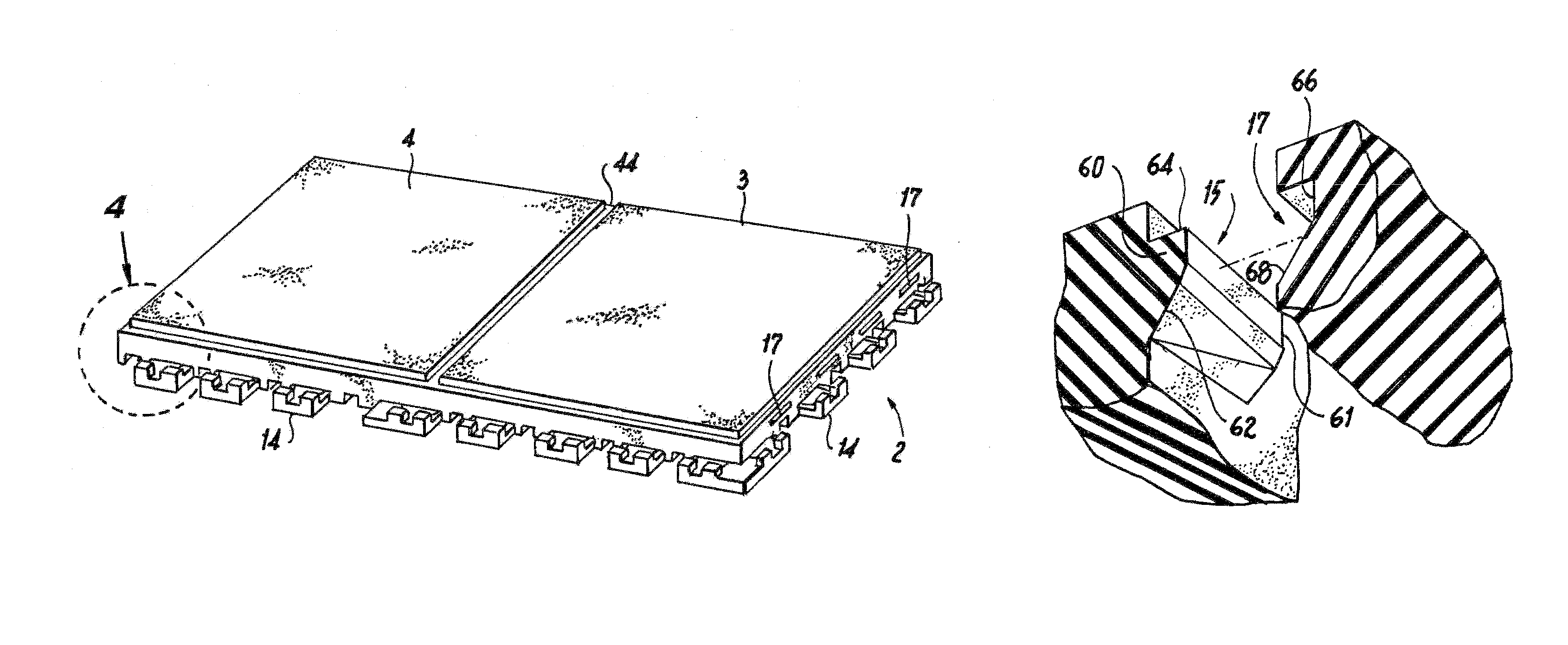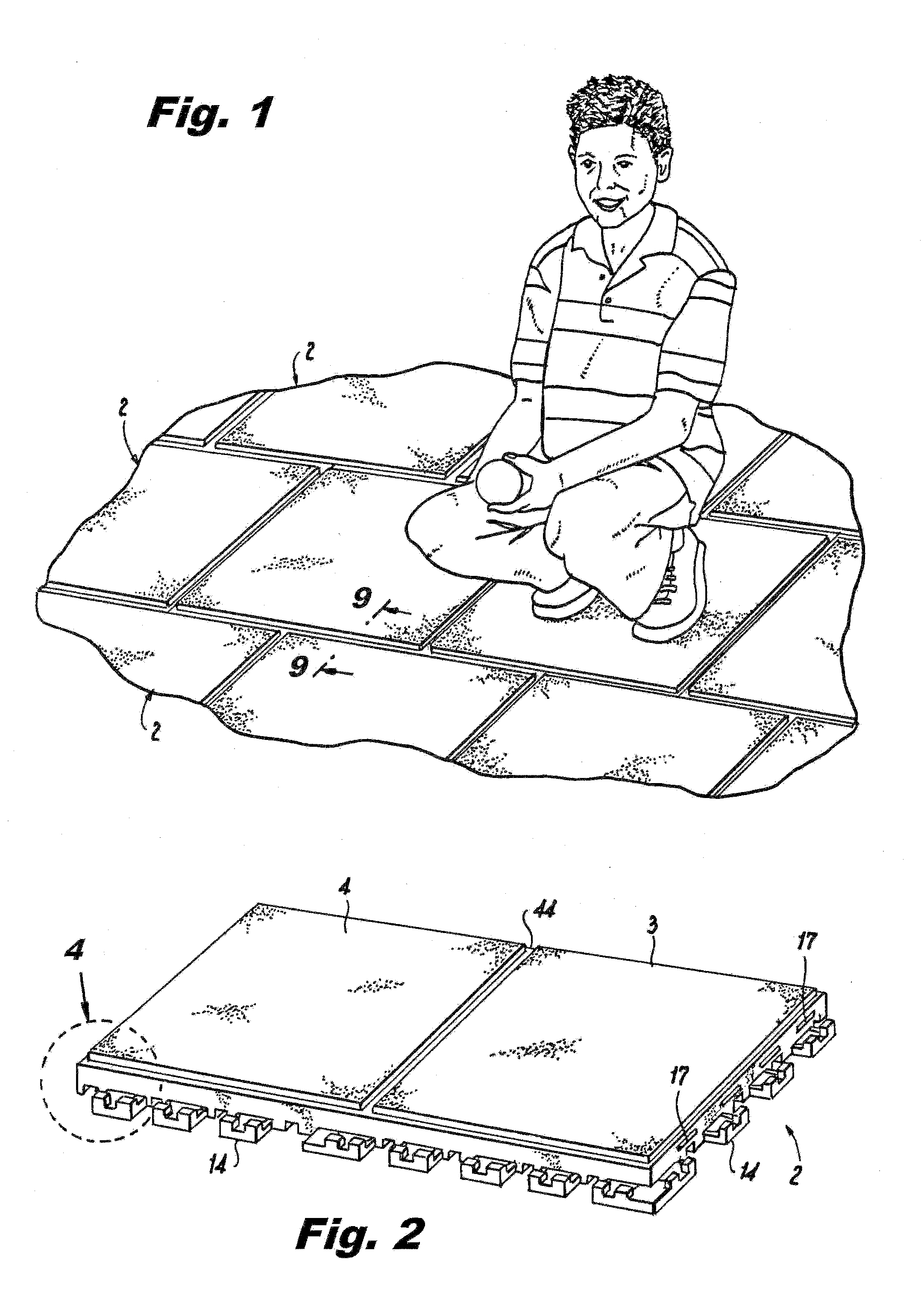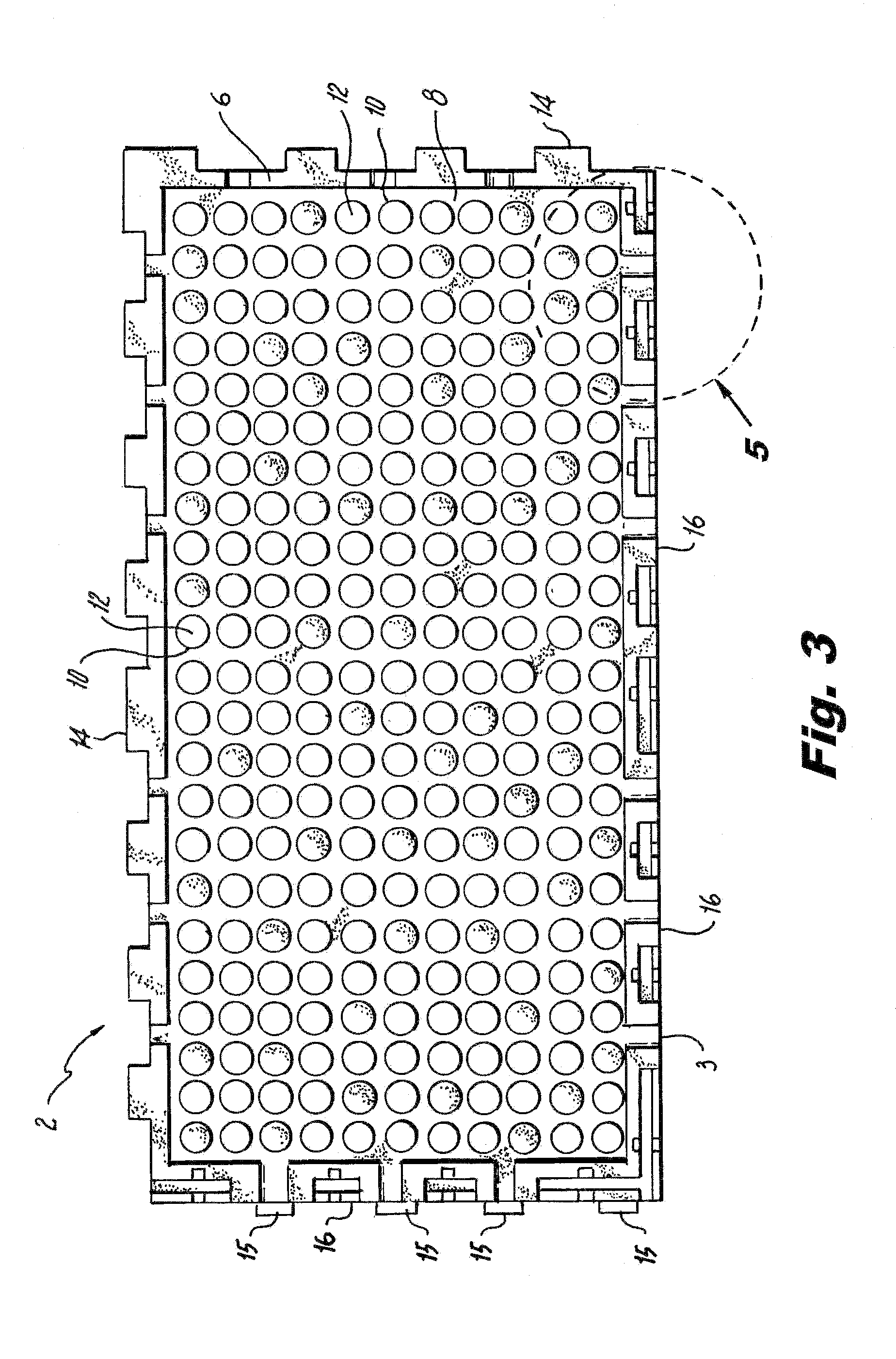Interlocking rubber tiles, mats, blocks and pavers for athletic and recreational surfaces, playgrounds and rooftops
a technology of interlocking rubber tiles and pavers, applied in the field of protective padding, can solve the problems of affecting the overall effectiveness of protective padding, long-term disability, and unforgiving ground materials, and achieve the effect of reducing separation, curling and peeling of edges
- Summary
- Abstract
- Description
- Claims
- Application Information
AI Technical Summary
Benefits of technology
Problems solved by technology
Method used
Image
Examples
Embodiment Construction
[0059]Referring to FIGS. 1-9 of the drawings, it will be seen that a rubber tile protective system constructed in accordance with a first embodiment of the present invention includes a plurality of rubber tiles 2, each rubber tile 2 being interconnectable to another by a series of interlocking mechanisms integrated along the peripheral edges of each tile. The rubber tiles 2 may be selectively coupled by the interlocking mechanisms to one another to form a customizable protective surface of various proportion and size, depending on the specific application and area to be protected.
[0060]Each tile 2 may be formed in a plurality of shapes and sizes, but preferably is rectangular. The tile 2 includes a main body 3 residing generally in a plane and having a top surface 4 having a high coefficient of friction for providing sufficient traction to children and other users. The main body 3 of the tile 2 also includes an oppositely disposed bottom surface 6, the bottom surface 6 being laid on...
PUM
| Property | Measurement | Unit |
|---|---|---|
| area | aaaaa | aaaaa |
| size | aaaaa | aaaaa |
| composition | aaaaa | aaaaa |
Abstract
Description
Claims
Application Information
 Login to View More
Login to View More - R&D
- Intellectual Property
- Life Sciences
- Materials
- Tech Scout
- Unparalleled Data Quality
- Higher Quality Content
- 60% Fewer Hallucinations
Browse by: Latest US Patents, China's latest patents, Technical Efficacy Thesaurus, Application Domain, Technology Topic, Popular Technical Reports.
© 2025 PatSnap. All rights reserved.Legal|Privacy policy|Modern Slavery Act Transparency Statement|Sitemap|About US| Contact US: help@patsnap.com



